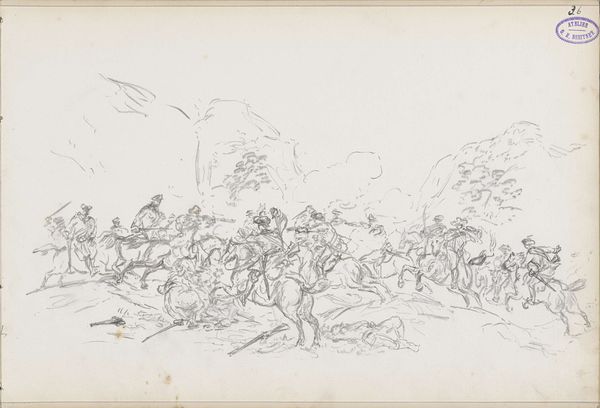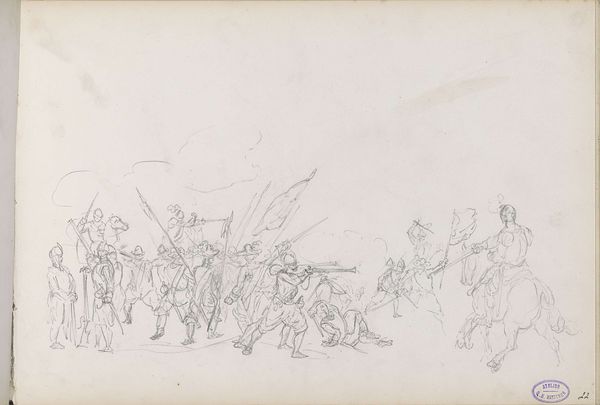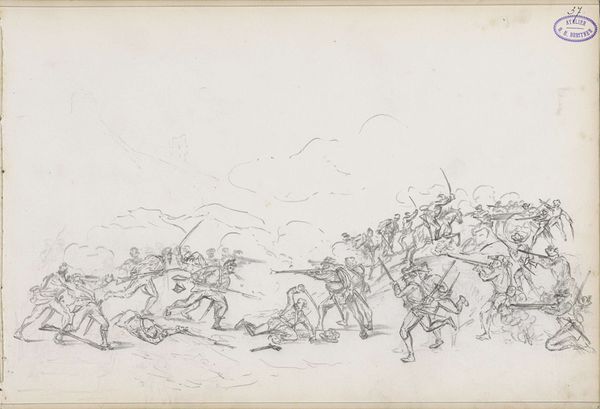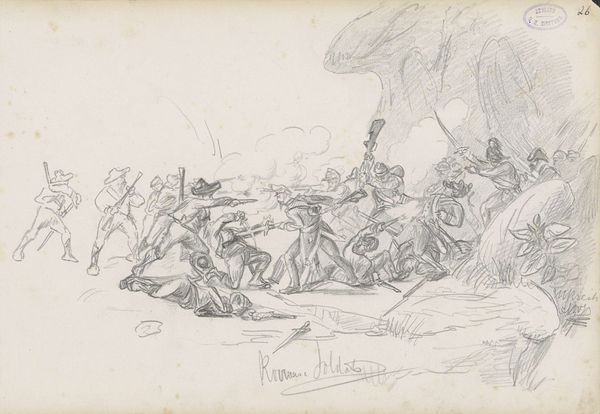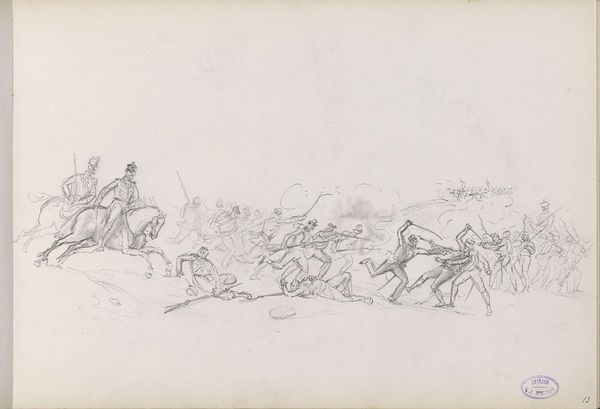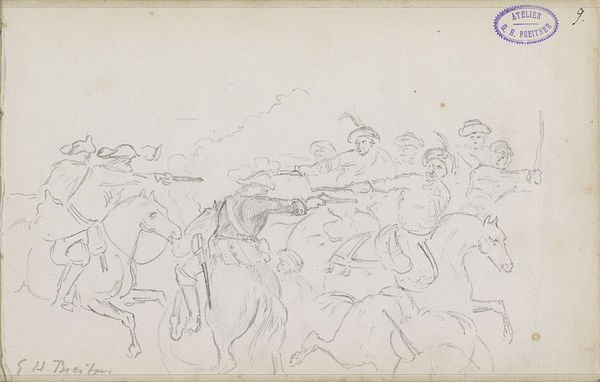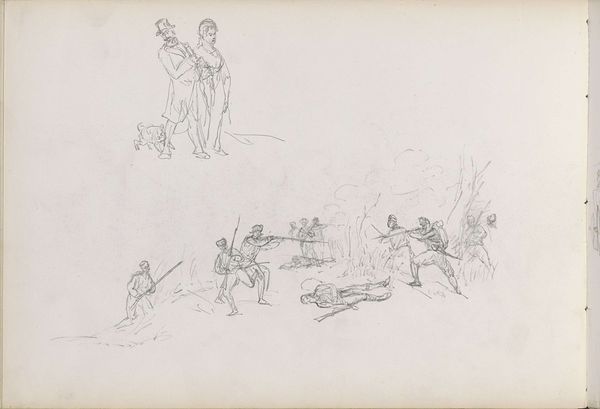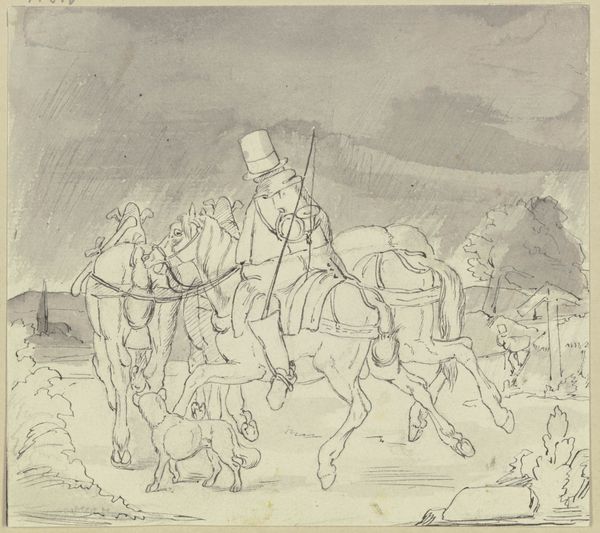
drawing, pencil
#
drawing
#
narrative-art
#
figuration
#
pencil
#
history-painting
Copyright: Rijks Museum: Open Domain
Curator: This drawing, currently held at the Rijksmuseum, is titled "Strijdende soldaten, te voet," which translates to "Fighting Soldiers on Foot," created by George Hendrik Breitner in 1873. Editor: It has an ephemeral, almost dreamlike quality. It is only pencil on paper, but the scene feels vast. A lot of chaotic energy in these figures sketched in a flurry. Curator: Breitner’s rendering really captures a sense of dynamism; in that era, art was often used to reinforce national identities and legitimize military actions. Do you feel this drawing adheres to that tradition? Editor: I think Breitner captures movement effectively but doesn't glorify war, which contrasts other battle scenes. The repetition of the soldiers might speak to broader human experiences across history. Their similar costumes can serve to reinforce that the core symbols remain consistent across historical eras. Curator: Absolutely. The institutional pressures surrounding artists shifted dramatically during his career. Perhaps his quick capture of conflict points toward a sense of military futility. What is captured in the visual is much more the feeling and psychology than the specifics of any historical reality. Editor: I see some clear symbolic elements with their weaponry, and the almost abstracted battle-scape hints at how war impacts people regardless of allegiances. It brings up that historical memory can be conveyed through suggestive visual symbols, too. Curator: Exactly! It makes you consider how different social and artistic expectations are about portraying military personnel, and this almost serves as an outlier to how we view military paintings. Editor: Yes. It seems, that even sketched quickly with pencil, this drawing still manages to explore much wider themes, despite being quite economical in terms of execution. Curator: I appreciate the glimpse it offers into Breitner’s thought process and the evolution of how war was represented. Editor: Indeed, its ambiguity allows for many interpretations about conflict, not simply about one conflict and its effect.
Comments
No comments
Be the first to comment and join the conversation on the ultimate creative platform.

